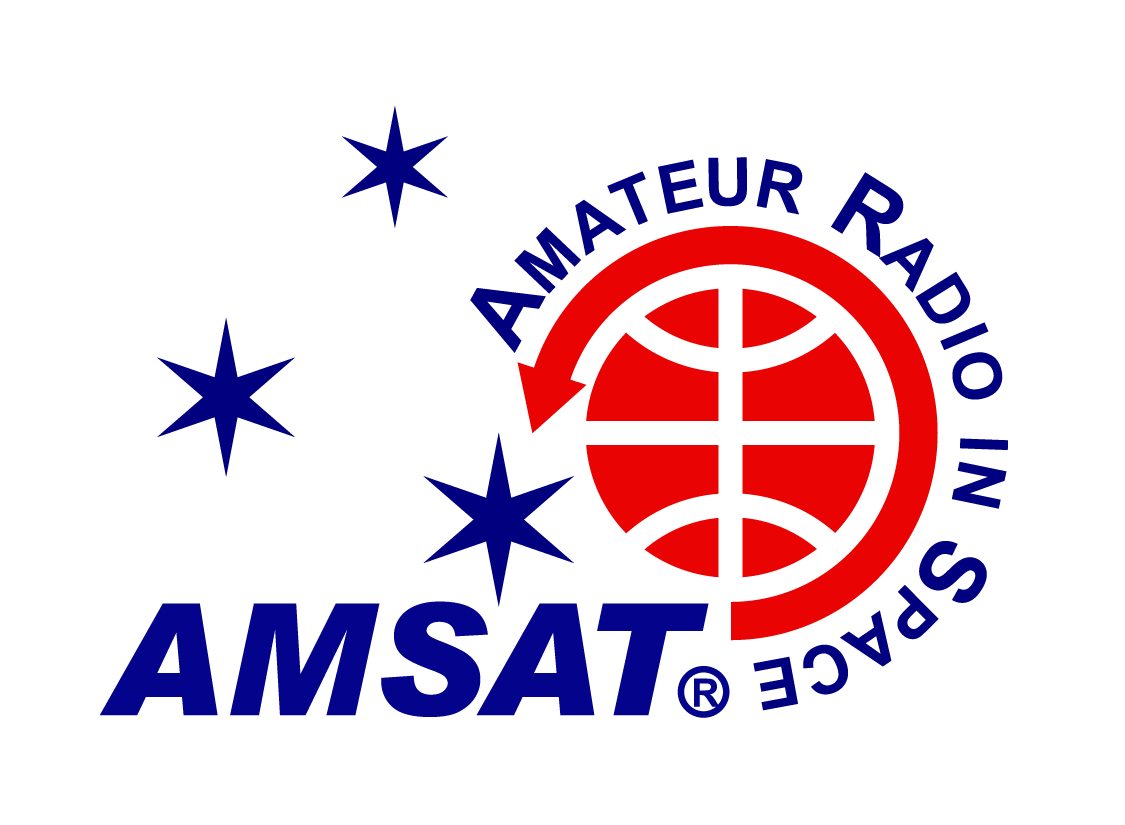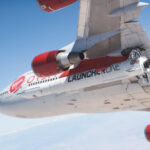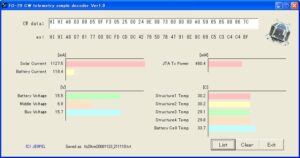AMSAT NEWS SERVICE
ANS-286
The AMSAT News Service bulletins are a free, weekly news and information service of AMSAT North America, The Radio Amateur Satellite Corporation. ANS publishes news related to Amateur Radio in space including reports on the activities of a worldwide group of Amateur Radio operators who share an active interest in designing, building, launching and communicating through analog and digital Amateur Radio satellites.
The news feed on https://amsat.org publishes news of Amateur Radio in space as soon as our volunteers can post it. Please send any amateur satellite news or reports to: ans-editor at amsat dot org. You can sign up for free e-mail delivery of the AMSAT News Service Bulletins via the ANS List; to join this list see: https://www.amsat.org/mailman/listinfo/ans
In this edition:
- 2019 37th AMSAT Space Symposium and Annual General Meeting
- 2019 37th AMSAT Space Symposium and Annual General Meeting Schedule
- September/October 2019 Apogee View
- W3ZM – 50 States in Our 50th Year
- ITU Magazine Reports on IARU Agenda Items for WRC-19
- Upcoming Satellite Operations
- Satellite Shorts From All Over
2019 37th AMSAT Space Symposium and Annual General Meeting
Please join us for the 2019 AMSAT 50th Anniversary Symposium, to be held in the Washington, DC Metro Area on October 18, 19, and 20, While the deadline for banquet and tour tickets has passed, walk-in registrations for the Symposium and Annual General Meeting are welcome.
The Symposium venue will be the Hilton Arlington, located in the heart of the Ballston neighborhood of Arlington, VA. The Hilton Arlington is located at 950 North Stafford Street, Arlington, Virginia, 22203, USA TEL: +1-703-528-6000 and the reservation code is AMSAT (Radio Amateur Satellite Corporation).
Connected to the Ballston Metro Station, the hotel offers easy and effortless access to Washington DC’s top tourist destinations like the National Mall, Smithsonian Museums and historic monuments. The hotel is six miles from Reagan National Airport and the National Mall. There are plenty of restaurants nearby.
The Symposium will feature OSCAR Park – a display of satellites from throughout the history of amateur radio in space – paper presentations, and a banquet with speakers celebrating AMSAT’s long history, and other events. The AMSAT Board of Directors Meeting will be held on October 16th and 17th at the same hotel. Two guided tours are available. On Sunday, October 20th a bus tour to the Smithsonian Air & Space Museum is available for $30 (max 35 people) and on Monday, October 21st, AMSAT President Joe Spier will lead a day tour to the National Mall via the Metro.
So please plan on attending the 50th Anniversary Symposium – you will be glad you did and keep checking the AMSAT website for further updates and information.
The 2019 AMSAT Space Symposium and Annual Meeting features:
- Space Symposium with Amateur Satellite Presentations
- Operating Techniques, News, & Plans from the Amateur Satellite World
- Board of Directors Meeting open to AMSAT members (October 16-17)
- Opportunities to Meet Board Members and Officers
- AMSAT Annual General Membership Meeting
- Annual Banquet, Speakers and Door Prizes !!
The latest news and information is always posted at: https://www.amsat.org/amsat-symposium/
[ANS thanks the 2019 AMSAT Symposium Team for the above information]
2019 37th AMSAT Space Symposium and Annual General Meeting Schedule
A preliminary schedule for the 37th AMSAT Space Symposium and Annual General Meeting has been posted to the AMSAT website. Check back for updates, including the speaker schedule at. https://www.amsat.org/symposium-schedule/
[ANS thanks the 2019 AMSAT Symposium Team for the above information]
September/October 2019 Apogee View
I am pleased to be writing this edition of “Apogee View” in Joe’s place as a special guest columnist. For those of you who don’t know me, I am somewhat new to amateur radio satellites and AMSAT. My first experience with amateur satellites was listening to the ARISSat-1 voice beacon and decoding its SSTV images in August 2011. In September 2012, I made my first satellite QSOs (on AO-27) and joined AMSAT. In 2015, I was elected Secretary by the AMSAT Board of Directors; and, in 2017, I was elected Executive Vice President. I also have served as both an alternate and a regular member of the board.
As I write this in late September, getting ready for the upcoming Symposium, summer refuses to yield to the cooler air of fall here in Washington, D.C. I hope the weather will be more comfortable for the Symposium in nearby Arlington, VA, in a few weeks.
In mid-September, we received the fantastic news that Amateur Radio Digital Communications (ARDC) awarded a very generous grant to ARISS for the InterOperable Radio System (IORS) and related infrastructure. ARDC is the owner and manager of the Internet network known as the AMPRNet. In June 2019, ARDC initiated a philanthropic endeavor to provide monetary grants to organizations, groups, projects, and scholarships which have significant potential to advance the state of the art of Amateur Radio and digital communications in general. While ARISS still needs additional donations to fund the IORS fully, this grant significantly helps the endeavor. ARISS plans to have the IORS ready for launch by the end of the year. AMSAT thanks ARDC for their substantial contribution to this effort.
ARISS is a key component of AMSAT’s vision. As printed inside the front cover of each issue of The AMSAT Journal, “Our Vision is to deploy satellite systems with the goal of providing wide-area and continuous coverage,” as we “continue active participation in human space missions and support a stream of LEO satellites developed in cooperation with the educational community and other amateur satellite groups.” AMSAT teams are hard at work on each clause of that vision statement.
The GOLF program is making good progress with development of the GOLF-TEE satellite. GOLF-TEE is a crucial element of our path back to high orbits and fulfilling the first clause of AMSAT’s vision to provide wide-area and continuous coverage satellite systems. Systems aboard GOLF-TEE include active attitude determination and control (ADAC), a radiation-tolerant internal housekeeping unit (RT-IHU), and a Fox-1E type VHF/UHF linear transponder. GOLF-TEE also will include a software defined radio (SDR) with a high-speed X band (10 GHz) data downlink which may also provide a simultaneous X band downlink of the V/u transponder passband, effectively providing V/x capability for use and evaluation. All of these technologies are crucial for missions to HEO and GEO, and additional information will appear in future issues of The AMSAT Journal.
Our participation in human space missions also is expanding. As announced at the AMSAT Forum at the Dayton Hamvention, international AMSAT and ARISS organizations have formed a group known as AREx (Amateur Radio Exploration). Work currently is underway on the design of a ham radio system for NASA’s Lunar Gateway. The Gateway will be a small spaceship in orbit around the Moon that will provide access to more of the lunar surface than ever before, with living quarters for astronauts, a lab for science and research, ports for visiting spacecraft, and more. The first sections of the Gateway are scheduled for launch in 2022. The plans call for various uses of L (1.2 GHz), S (2.4 GHz), C (5 GHz), and X (10 GHz) bands for repeater-type communications, both analog and digital, through Gateway, image transmissions from both inside and outside the Gateway, possible access to experiments aboard Gateway, and two-way communications with astronauts while Gateway is crewed. The challenges for amateurs involve the substantial increase in free space path loss compared to satellites in low earth orbit. We are very excited about AMSAT’s participation in this project. More details will be presented at the 2019 AMSAT Space Symposium and articles will certainly follow in future editions of The AMSAT Journal.
Finally, we continue to support a stream of LEO satellites. RadFxSat-2 / Fox-1E is ready for launch no earlier than December 1, 2019 on the ELaNa XX mission. That mission will launch on the first commercial flight of Virgin Orbit’s LauncherOne air launch to orbit system. Stay tuned to ANS for further updates on the launch date.
The linear transponder and telemetry system carried aboard Fox-1E was designed for use in different CubeSats by merely adding an interface adapter for connection to the host bus. Noting the prevalence of CubeSats built and launched by universities and other organizations, AMSAT adopted a goal of “amateur radio in every CubeSat.” Interested CubeSat programs wanting to fly an amateur radio payload may partner with AMSAT to carry one of these modules on their spacecraft. By providing amateur radio capability, the CubeSat program gets a worldwide ground station network to receive their telemetry and experiment data while the amateur radio community gets a transponder to use in orbit.
The first of these partnerships is with the Husky Satellite Lab at the University of Washington. Their 3U CubeSat, HuskySat-1, is scheduled to launch on the ELaNa XXV mission from Wallops Island, VA, no earlier than November 2. Northrup Grumman’s Cygnus spacecraft will carry HuskySat-1 on a mission to the International Space Station. After completing its mission at the ISS, Cygnus will continue to a higher orbit of approximately 500 km to deploy HuskySat-1. After a 30-day mission to complete tests of its experimental payloads, a pulsed plasma thruster, and a K band (24 GHz) communications system, the satellite will be turned over to AMSAT, and the linear transponder will be made available to the amateur radio community. In addition, AMSAT Vice President of Engineering, Jerry Buxton, N0JY, and Vice President of Operations, Drew Glasbrenner, KO4MA, have been hard at work identifying and working with several CubeSat groups interested in carrying this system. We hope to be able to make additional announcements soon.
The 2019 AMSAT Board of Directors election recently concluded. I congratulate the winners and look forward to working with the newly-elected board to further our vital mission to Keep Amateur Radio in Space. By the time this Journal arrives, the 2019 Board of Directors meeting and 50th Anniversary AMSAT Space Symposium will have concluded. It promises to be an exciting weekend exploring both AMSAT’s five-decade history and the work we are doing for the future.
While there will no doubt be many challenges in the future, I am confident in the organization’s ability to overcome them. We will Keep Amateur Radio in Space. I look forward to attending the AMSAT Centennial Symposium in the fall of 2069 at the age of 84. Hopefully, by then we will be discussing our plans for amateur radio on the first crewed interstellar mission.
[ANS thanks Executive Vice President Paul Stoetzer, N8HM, for the above information]
W3ZM – 50 States in Our 50th Year
In 1969, a group of amateur radio operators, with dreams of space, formed the Radio Amateur Satellite Corporation (AMSAT). To commemorate this golden milestone, AMSAT decided what better way to celebrate 50 years of Keeping Amateur Radio in Space, then to get AMSAT’s W3ZM call sign to operate from all 50 states and the District of Columbia as a leadup to the 2019 AMSAT 50th Anniversary Space Symposium and General Meeting, to be held in Arlington, VA, October 18 – 20, 2019.
AMSAT put out a call to its members to get on the air and activate their states, using AMSAT’s W3ZM call sign, as well as to cover those states without an active AMSAT operator. Activations of United States Territories (i.e. Puerto Rico, Guam, American Samoa, the U. S. Virgin Islands, and the Commonwealth of the Northern Mariana Islands) were also encouraged.
Puerto Rico kicked it off on June 20th and was first on the air, and then, one by one, the U.S.A. map started filling in. Members, some without their family’s knowledge, brought satellite gear with them on vacation to help fill in the harder ones.
By the start of October, three weeks before Symposium, 47 states and Puerto Rico were in the log. West Virginia came in October 2nd, Maryland and Delaware on October 6th, and finally Washington, D.C., the birthplace of AMSAT, on October 10th. Coincidently, Washington C. was activated outside of the apartment building where one of the first meetings to form the organization was held.
To say the response was overwhelming would be an understatement and proved why AMSAT’s greatest strength comes from its members. To all of the W3ZM/p activators and participants, AMSAT THANKS YOU. You made this a fun and exciting celebration of AMSAT’s 50th Anniversary of Keeping Amateur Radio in Space!
[ANS thanks Vice President for User Services Robert Bankston, KE4AL, for the above information]
The digital download version of the 2019 edition of
Getting Started with Amateur Satellites is now available as
a DRM-free PDF from the AMSAT Store. Get yours today!
https://tinyurl.com/ANS-237-Getting-Started
ITU Magazine Reports on IARU Agenda Items for WRC-19
David Sumner, K1ZZ, Secretary, International Amateur Radio Union (IARU) authored an article in the special WRC-19 issue of #ITU News magazine,”Views of the International Amateur Radio Union on WRC-19 agenda items“.
Among many overall IARU objectives for WRC-19 one directly affects amateur satellite operation:
Agenda item 1.7 – spectrum for non-GSO satellites
- The IARU supports satisfying the spectrum requirements for non.GSO satellites with short duration missions within the existing allocations for the space operation service or the frequency ranges identified in invites ITU.R 3 of Resolution 659 (WRC.15), unless the satellites are amateur satellites as defined in Radio Regulations (RR) Nos. 1.56 and 1.57. The band 144-146 MHz is especially important to amateurs as it is currently the only worldwide primary amateur and amateur-satellite allocation between 29.7 MHz and 24 GHz. It is heavily used in all three Regions for all forms of amateur communications including disaster response.
Sumner’s article begins on page 72 of the magazine which can be accessed as a 20 MB PDF file at: https://t.co/acLwy4W5Jo?amp=1
[ANS thanks the IARU for the above information]
Purchase AMSAT Gear on our Zazzle storefront.
25% of the purchase price of each product goes towards
Keeping Amateur Radio in Space
https://www.zazzle.com/amsat_gear
Upcoming Satellite Operations
[Ed. note – Twitter URLs can be accessed with your web browser even if you do not have a personal Twitter account.]
Satellite Shorts:
- EM25,EM35 – WI4T – Oct 15 & 16, holiday style
- DN04 – KI7UNJ – Oct 21, 1653z to 1910z, FM only
- Central California (CM95, CM96, DM05, DM06) – October 19, 2019
David AD7DB will re-visit the four grids near Kettleman City CA. AO-91, AO-92, SO-50 will be used, with eastern passes a priority. Maybe PO-101 if it’s on, and AO-85 if it’s not too finicky. Contacts will be put on LOTW following the trip. Updates on Twitter https://twitter.com/ad7db - Hawaii (BK19, BK28, BK29, BL20) December 21-28, 2019
Alex, N7AGF, is heading back to Hawaii over Christmas. This will be a holiday-style activation, with special emphasis on the grid that got away – BK28. Keep an eye on Alex’s Twitter feed for further announcements: https://twitter.com/N7AGF
Please submit any additions or corrections to ke4al (at) amsat.org
[ANS Thanks Robert Bankston, KE4AL, for the above information]
The Fox-In-A-Box Raspberry Pi SD card for setting up a Raspberry Pi-based
telemetry station for the Fox-1 satellites now supports the Raspberry Pi4.
Get yours today on the AMSAT Store!
https://amsat.org/product/fox-in-a-box-raspberry-pi-sd-card/
Satellite Shorts From All Over
- Mike Diehl, W8LID, recently developed a web-based tool for easy generation of new lines for SatPC32’s Doppler.sqf file.
AMSAT is pleased to host this new tool on our website at https://www.amsat.org/doppler-sqf-line-generator/ - NASA has announced that the Orbital CRS-12 mission is now scheduled for launch from Wallops Island, VA no earlier than November 2nd. HuskySat-1, carrying an AMSAT V/u linear transponder, will launch on this mission.
- Happy 4th Birthday AO-85!
At 12:49:30 UTC on October 8, 2015, the first Fox-1 satellite, Fox-1A was launched on an Atlas V rocket with the NROL-55 mission from Vandenberg Air Force Base. Designated AO-85 on-orbit, the satellite remains operational while in sunlight despite battery degradation due to the temperatures experienced in its orbit. - A new distance record has been claimed on the IO-86 FM transponder: 5,324 km between PU4JOE in GH91ad and 9G5AR in IJ95vn.
- SDRPlay has announced an easy setup for using an SDRPlay with GNU Radio on Windows. https://t.co/RxDDzcBu8f
- Space Daily has an article about Virgin Orbit.
Virgin Orbit will carry RadFxSat-2 / Fox-1E on its LauncherOne vehicle. https://tinyurl.com/ANS-286-SD - Chris Thompson, AC2CZ/G0KLA, announced a minor update to his KLATrack satellite tracking program. The update improves rendering of the display. KLA Track can be downloaded at https://www.g0kla.com/klatrack/index.php
- The Dutch Amateur Radio Union awarded their first Worked Dutch Kingdom Certificate for satellite QSOs on October 10th to Paul Stoetzer, N8HM. This certificate is available for making QSOs with each of the six DXCC entities within the Dutch Kingdom. For more information, see https://www.daru.nu/index.php/nl/awards
- At least two new operators achieved Satellite WAS this past week. K5IX and KB6LTY each worked W3ZM/3 in Delaware on Oct 6 for state #50.[ANS thanks everyone for the above information]
In addition to regular membership, AMSAT offers membership in the President’s Club. Members of the President’s Club, as sustaining donors to AMSAT Project Funds, will be eligible to receive additional benefits. Application forms are available from the AMSAT office.
Primary and secondary school students are eligible for membership at one-half the standard yearly rate. Post-secondary school students enrolled in at least half time status shall be eligible for the student rate for a maximum of six post-secondary years in this status. Contact Martha at the AMSAT office for additional student membership information.
73,
This week’s ANS Editor,
Paul Stoetzer, N8HM
n8hm at amsat dot org

 Information about AMSAT activities at important events around the country is posted on the AMSAT Hamfests & Conventions web page:
Information about AMSAT activities at important events around the country is posted on the AMSAT Hamfests & Conventions web page:
